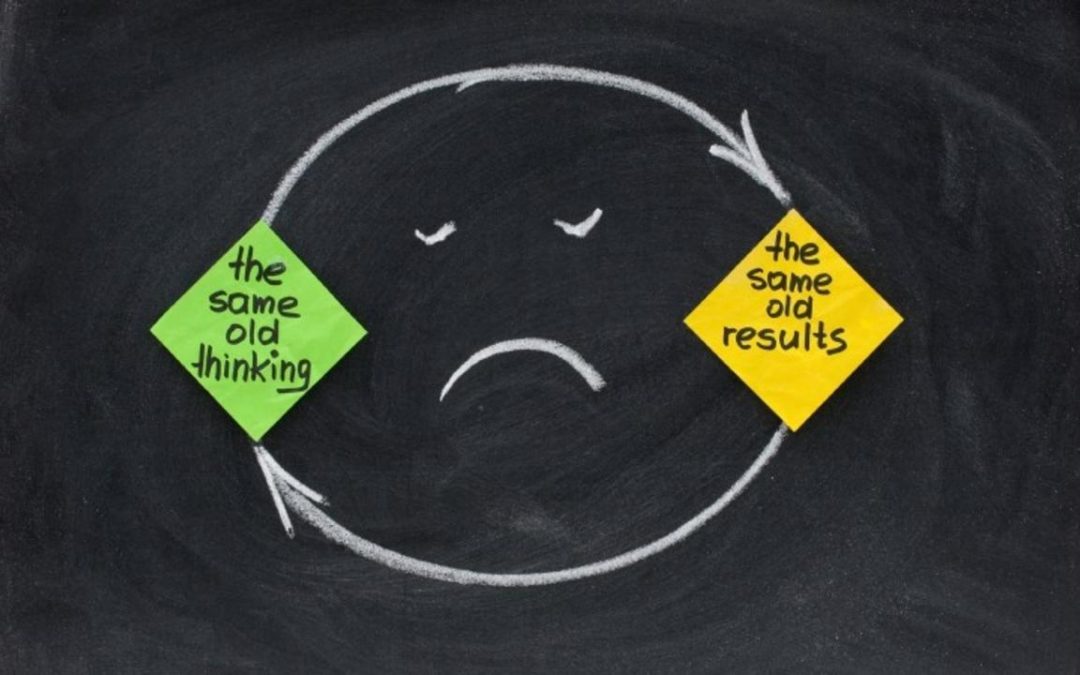As a leader, what role do you take in your own leadership development?
If 2020 taught us anything, it was the importance of seeing the big picture without losing sight of the small details. This requires tremendous skill in balancing priorities, energy, and focus. And while most great leaders can take pride in their ability to multi-task under stress, this year has really tested their abilities.
Leaders are called on again and again to shift their attention from one priority to another. They must consistently and consciously choose (and judge) that which is deserving of their attention. They must ignore impertinent distractions.
Developing the right leadership skills and habits is critical to personal and organizational success.
The Importance of Habits
Consider this: 80% of our results stems from only 20% of our efforts, according to Joseph M. Juran. In the context of our productivity and efficiency, this means that only about 20% of our activities actually provide the results we are looking for, professionally and personally.
To devote more time and energy to our most important activities we need to be able to recognize and say “no” to the people, places, and things that distract us from achieving our goals. This isn’t always easy, especially when we really like our distractions, or worse, our distractions become bad habits.
Disrupting the habits that are counter-productive is important, but it doesn’t eliminate them. Unless a new routine takes its place, the pattern will continue automatically. Fortunately, we’ve come to a new level of understanding about habits, and we’re learning and practicing new techniques to improve them.
The Importance of Focus and Concentration
In ConZentrate: Get Focused and Pay Attention–When Life Is Filled With Pressures, Distractions, and Multiple Priorities (St. Martin’s Press 2000), Sam Horn identifies essential keys to concentration that are helpful reminders:
- Develop your ability to be single-minded. This requires making choices as to priorities and scheduling.
- Put your interest(s) in action. Engross yourself in an activity to a state of flow.
- Discipline your thoughts. Focus on what is needed, and say “no” to outside distractions.
- Begin again, and again, and again. Persist in spite of distraction, opposition, discouragement, and counter influences.
An important key to focus and concentration is to recognize when on auto-pilot, or taking action out of habit.
When Distractions Become Habits
To be sure, some behaviors make for good habits. This includes the behaviors you stopped doing, especially when distractions become habits. In today’s business world, this can make a big difference in your success.
In his recent book, Tiny Habits: The Small Changes that Change Everything (Houghton Mifflin Harcourt 2020) behavior scientist BJ Fogg, PhD, illustrates how behavior happens when motivation, ability, and prompt converge at the same moment. Fogg illustrates this in the Fogg Behavior Model, whereby motivation is your desire to do the behavior. Ability is your capacity to do the behavior. Prompt is your cue to do the behavior.
A Simple Model to Create New Habits
To create a new habit, work through the model, or formula:
Motivation + Ability + Prompt = Behavior
- Is there a prompt for the desired behavior?
- Is there ability to complete the desired behavior?
- Is there motivation to complete the desired behavior?
As any great leader or manager can attest, all of these questions need to be answered as it relates to the individual completing the behavior.
The process of habits includes neurological cravings for the pleasure-inducing neurotransmitter dopamine, which motivate us to take action. However, motivation alone is not enough to help us change our behavior and create a habit.
Motivation: Motivation is complex, often made up of competing or conflicting motives: opposing drives related to the same behavior. Therefore, we must outsmart motivation by focusing on behaviors: something you or your employees can do right now or at any given moment.
Ability: Understanding and strengthening our skills and abilities is critical to success. To make a behavior easier to do—to increase ability—successful leaders improve skills, get the tools and resources needed to complete the behavior, and/or make the behavior tiny with a small step toward the desired behavior.
Prompts: Prompts are the “invisible drivers of our lives,” according to Fogg, and can be simplified into three categories:
- Person (reptilian brain; internal cues)
- Context (environmental; external cues)
- Action: a behavior you already do (an anchor) that can remind you to complete a new action until it becomes a habit. For example, after I (anchor), I will (new habit.)
The Habits that Transform Your Leadership
As a leader, which of your habits yield the greatest productivity and efficiency for you and your organization?
Identify the 20 percent of your efforts that bring you 80 percent of your results. If you need help with this, consider working with a qualified executive coach. Then, identify three important behaviors you can turn into habits.
Identify Transforming Habits
- Clarify your aspiration (or desired outcome).
- Explore specific behavior options without censoring yourself. Consider those you might do once, those that would become a habit, and even habits you would stop.
- Match with specific behaviors. Identify your “golden behaviors:” those that are effective (impact), desirable (motivation), and doable (ability).
- Start tiny.
- Find a good prompt (anchor).
- Celebrate successes: emotions create habits. Positive emotions trigger that feel good reward of dopamine, so celebrate immediately: give yourself a pat on the back, a high-five in the mirror, bust a dance move, congratulate yourself, whatever works for you.
- Troubleshoot, iterate, and expand.
Questions for Leaders
Here are some things to discuss if you’re working with a coach:
- What are you paying attention to?
- What are your biggest distractions?
- What three habits would bring you quality results?
What do you think? What new habits will transform your leadership? We’d love to hear from you.
Thanks to the good folks at Kashbox Coaching for this article.

